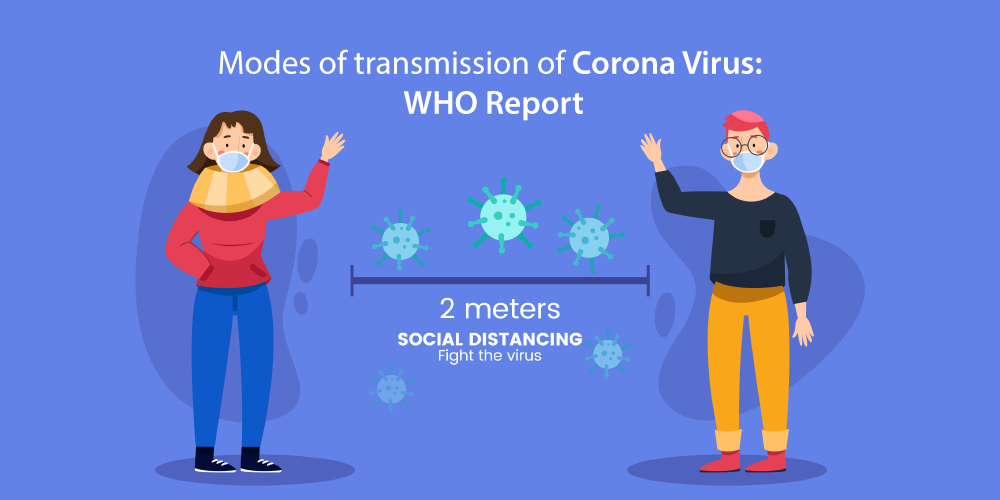WHO has recently published a recommendation report stating the modes of transmission of Corona Virus (COVID-19).
WHO in its publication state “Respiratory infections can be transmitted through droplets of different sizes: when the droplet particles are >5-10 micro meter in diameter they are referred to as respiratory droplets, and when then are <5 micro meter in diameter, they are referred to as droplet nuclei.”
 Evidence suggest, COVID infection infection is referred generally through respiratory droplets, which means the droplet particles are 5-10 micro meters in size.
Evidence suggest, COVID infection infection is referred generally through respiratory droplets, which means the droplet particles are 5-10 micro meters in size.
Transmission of COVID-19 through droplets generally occurs when a person generally within 1 meters of radius sneezes or coughs and also transmission through other bodily fluids.
With these studies suggestion respiratory droplet transmission, WHO recommends to maintain a social distance in public spaces of at-least 1 meters.
 Apart from droplets, COVID-19 transmission can also occur through airborne particles. Airborne transmission can generally occur when microbes are present within droplet nuclei.
Apart from droplets, COVID-19 transmission can also occur through airborne particles. Airborne transmission can generally occur when microbes are present within droplet nuclei.
These airborne particles can remain airborne for a longer period of time and can infect a person at greater distance than one meters.
In one case, scientists have also found out that COVID-19 in some cases can also lead to intestinal infection and the virus can be transmitted through fecal matter. This theory requires more study.



